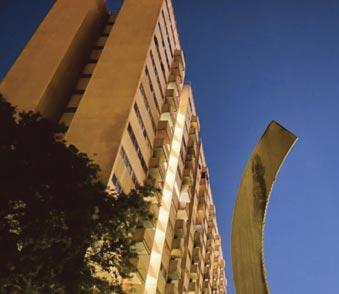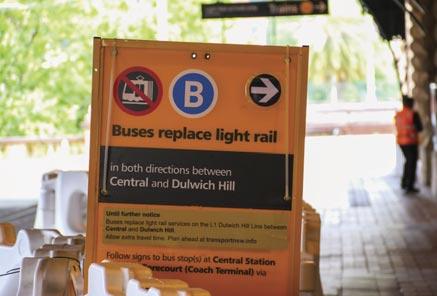
11 minute read
NEWS
Sydney’s summer of freedom
As the NSW government and the City of Sydney make efforts to resuscitate the hospitality industry, the planning rule book has been thrown out the window.
Advertisement
NSW customer service minister Victor Dominello, who led last year’s calls to reduce red tape to allow hospitality venues to create alfresco spaces, said: “The sweet life in Sydney is all about the outdoors. The time is coming to embrace our summer of freedom.” The further expansion of reforms means that streets, bowling greens — even carparks — can become potential outdoor settings for restaurants and beer gardens.
NSW planning minister Rob Stokes said the government will do all it can to make it easy for venues to expand their businesses outside. “We’re blessed with a beautiful climate, and spectacular places and open spaces. Let’s move indoors outdoors, raise a glass and enjoy summer after a rough winter.”
Meanwhile, urban think tank Committee for Sydney is lobbying for local councils to pedestrianise their high streets. “As the weather gets warmer, we call on councils and state government to work with local businesses to temporarily close certain streets and to roll out parklets across the city,” read a statement. “Done right, we have an opportunity to build a new culture of outdoor dining across Sydney.”
COMMITTEE FOR SYDNEY
Lengthy light rail shutdown
After cracks appeared in inner west trams, all services were immediately suspended along the L1 light rail line and replaced with buses.
Shorty after, transport minister Rob Stokes revealed the extent of the damage was “more significant than first thought”. “The inner west light rail fleet will be decommissioned for up to 18 months while the issues identified are rectified,” Stokes announced.
The cracks — found on all 12 trams running from Dulwich Hill to Central Station — were discovered during routine maintenance. Following a detailed inspection of the Spanish-built vehicles, Transport for NSW chief operations officer Howard Collins said cracks in their base were clearly visible. “We drove up and down the line, and you could see the cracks opening and closing on a normal straight bit of track with no bumps or twists as the car body is stressing itself because there are cracks in this suspension area,” Collins Speaking to the Inner West Review, inner west mayor Rochelle Porteous called the situation “deplorable”. “The inner west is paying the price of foolish decisions made by the government that has been more focused on privatising the route than delivering a safe, integrated and reliable light rail service.”
Meanwhile, NSW Labor was quick to seize on the latest of a litany of problems with the government’s overseas-procured transport vehicles. Shadow minister for transport and member for Summer Hill Jo Haylen said: “The government’s transport procurement policies are now in tatters. They bought trains that don’t fit the tracks, ferries that can’t fit under bridges or operate at night, and an entire fleet of trams that simply don’t work.”
told the Sydney Morning Herald.
For Inner Westies, the extended shut down of the 12.8km light rail line will cause major disruption — especially as people emerge from their home offices to return to their CBD work stations. With the replacement bus journeys considerably slower and longer, Stokes announced passengers would receive 50 percent discounts on their fares to and from the city. “I understand regular passengers on the inner west light rail are really frustrated by this situation,” Stokes said.
Restoring the strip
Oxford Street is loved for its rich and varied cultural history. It is a sacred walking track of the Gadigal people of the Eora nation. For decades, it was an iconic destination for Sydney’s queer revellers and home to the annual Mardi Gras parade.
However, over recent years, Oxford Street (aka the Golden Mile) has lost its shine. But City of Sydney has a plan to revitalise the strip, including allowing for two extra storeys on top of every building in Oxford Street’s Darlinghurst precinct and up to four extra floors on Taylor Square, attracting hundreds of millions of dollars of development.
Council estimates the proposed changes to Oxford Street’s planning rules will unlock more than 42,500 square metres of employment floor space and 11,000 square metres of new creative and cultural space.
“We’re breathing new life into the fabulous strip with innovative controls to support growth and diversity, protect heritage and character, and promote both day and night-time economies,” said Sydney lord mayor, Clover Moore. Council held a public consultation last year on ways to resuscitate the strip, which has long been characterised by shuttered shops and flaking facades. Moore acknowledges that Oxford Street has suffered “significant troubles in the recent past”. These included draconian lockout laws, the state government’s clearway, and the Westfield shopping centres in Bondi Junction and the CBD.
Yet despite the setbacks, Moore said the strip remains “one of our greatest and best-known streets”. She added that the proposed changes would build on Oxford Street’s global reputation as the heart of Sydney’s LGBTQ+ community as the city gears up to host the World Pride festival in 2023. (See page 20.)
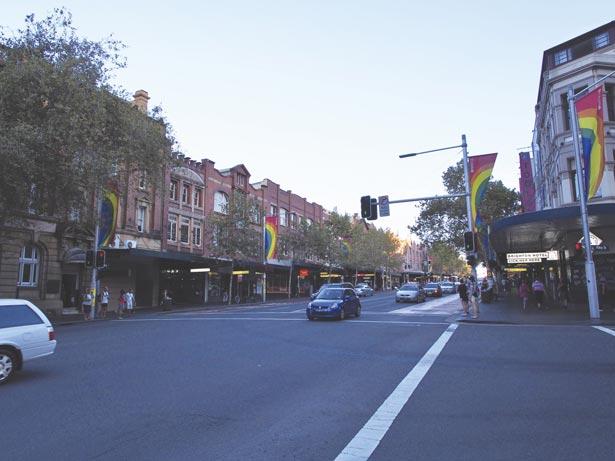
Easing social housing shortage
Calls have been made to convert vacant student accommodation into social housing. The significant reduction of international students in Sydney due to COVID has created an opportunity to house the city’s vulnerable.
Both Canterbury-Bankstown and Inner West councils have made submissions to a NSW parliamentary inquiry into social housing about how they could open up empty student rooms to people without a place to stay. Hotels, motels, boarding houses and backpacker accommodation could also be considered being made available to those in need.
While supportive of “creative ways to utilise otherwise empty buildings to provide temporary housing”, in its submission to the inquiry, Shelter NSW said there was “no substitute for dramatically increasing the stock of social and affordable rental dwellings across NSW”. Shelter then called on the government to “dramatically increase the stock of social housing across NSW (build or acquire 5,000 additional social housing dwellings per year for 10 years)”.
Domestic Violence NSW (DVNSW) also called for an investment in the construction of 5,000 social housing properties every year over the next decade. DVNSW went on to stress that older women are the fastest-growing cohort of homeless in Australia: “This is often as a result of DFV [domestic and family violence], pay inequity, little to no superannuation or savings, divorce, and time taken as unpaid carers.”
Meanwhile, in its submission to the social housing inquiry, the peak body for councils — Local Government NSW — called for minimum targets of 5 to 10 percent social and affordable housing across the state, and 25 percent for government-owned land which is developed. More than 50,000 people are currently on the NSW social housing waiting list, with wait times of up to a decade.
NEWS
Hands off Callan Park!
A draft bill proposing an easing of commercial restrictions at Callan Park has drawn ire from MPs and local community groups. If passed, the legislation will allow food and drink providers and other businesses to operate at the 61-hectare Lilyfield park.
Greens MP for Balmain Jamie Parker is among those fighting to stop the bill from passing parliament. “This is a backdoor way to raise revenue from the site. It is pure profit seeking,” Parker told the Sydney Morning Herald. “It is opening the door to the exploitation of Callan Park by ripping up all existing protections.”
The bill would also allow businesses to obtain 50-year leases for the park’s heritagelisted buildings such as the Kirkbride complex. Such a proposal, say advocates, could see Kirkbride become a commercial space. Currently, only notfor-profit community facilities are permissible at Callan Park.
Describing the current regulations as “overly restrictive”, planning and public spaces minister Rob Stokes said: “Having a coffee cart or a community concert at this beautiful park by the water’s edge seems reasonable to me.”
The former site of a psychiatric hospital, Callan Park is home to a number of crumbling, abandoned buildings. Buildings, said Stokes, that could be utilised as bars, galleries and cafes. “A long-term tenant could breathe new life into them,” he said. In response, Parker said: “Cafes are a Trojan Horse that will crack the door open to big business and large-scale commercialisation.”
Meanwhile, inner west mayor Rochelle Porteous called the proposal “privatisation by stealth”. “This is what the inner west has been fearing for years — that the NSW government will sell off Callan Park to the highest bidder. How many times do we have to say this: ‘Callan Park is not for sale — hands off!’” (See page 26.)
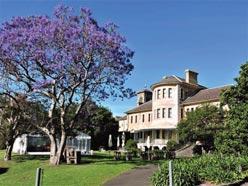
Sydney Park superblock appeal
Plans to build a ‘superblock’ within Sydney Park are being further considered by the Land and Environment Court after the City of Sydney’s Central Sydney Planning Committee rejected an application to build 389 apartments earlier this year.
Maxida International — which owns the site of the One Sydney Park development — is appealing to the court to approve scaled-back plans for 356 units in eight six-storey buildings (shown in white at right) along Euston Road at a cost of $234 million.
Potential buyers of One Sydney Park have been promised “resort-style facilities” and use of Sydney Park as their own “personal playground”, with most apartments enjoying vista views of one of the city’s largest green spaces.
Sydney Park — once a former landfill site — has been transformed over the last three decades into an inner-city oasis made up of wetlands, gardens, a sports oval and a children’s playground. Its location — sitting along the borders of Alexandria, Newtown and Erskineville — was always going to attract the interest of developers and, in 2017, a plan was rubber-stamped to develop the park — despite a vigorous campaign by community group, the Friends of Erskineville (FoE). President of FoE Andrew Chuter said a large residential block would put “unacceptable pressure” on the park. “The location of the proposed apartments, adjacent to the sensitive wetlands, would place unacceptable pressure on the wildlife, from the muchloved baby swans to migratory birds from Japan to Siberia,” said Chuter.
FoE is calling on planning minister Rob Stokes to intervene and return the land to the public. “We would prefer the state government to buy up the land and convert it into parkland and thereby fulfil the original vision for Sydney Park,” Chuter told the Sydney Morning Herald. “A property developer . . . shouldn’t be allowed to run roughshod over the community’s wishes.”
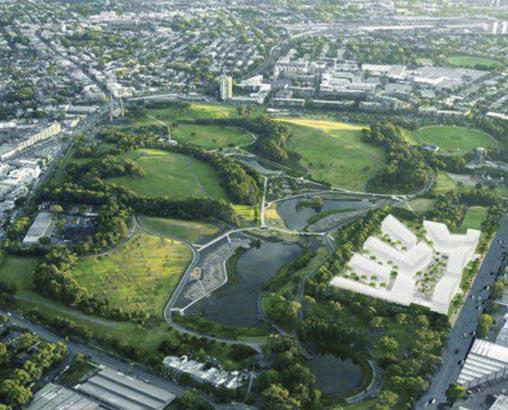
NEWS
NSW leads on sexual consent
In a major step forward for reform, the NSW parliament has mandated affirmative sexual consent during any sexual activity. Shortly after the vote, Greens MP Jenny Leong took to Twitter to say that members had voted “an enthusiastic yes”.
Under the affirmative consent bill — proposed by NSW attorney-general and minister for prevention and sexual violence Mark Speakman — a person only gives consent if “at the time of the sexual activity, they freely and voluntarily agree to the sexual activity”.
Furthermore, the consent must be clearly communicated. “No one should assume that someone is saying yes just because they don’t say no or don’t resist physically,” Speakman said in parliament in October. “People are entitled to expect that if someone wants to have sex with them then the other person will ask. If the first person hasn’t said something, or done something, to communicate consent, then that other person will take further steps to ascertain consent — this is just a basic matter of respect.”
The bill will help clarify alleged offenders’ claims they had “reasonable grounds” to believe that they were given consent by their sexual partner. Also, the bill will give legal protection to victims of sexual violence who were unable to clearly communicate they no longer consented to something mid-act.
Inspired by victims’ stories of rape and sexual violence, the reforms — said survivor and advocate Saxon Mullins — will mean so much to so many survivors “who understand firsthand the difference this bill can make”.
“It has been three years since I came forward to share my own story, and while progress can feel slow, I know this bill is a huge leap forward and will see NSW leading the way in consent law around the world.” The affirmative sexual consent bill is expected to become law mid-next year.
MARK SPEAKMAN, NSW ATTORNEY-GENERAL
Plan of action for Waterloo
Through consultation with agencies and residents, the Waterloo Human Services Collaborative has drawn up an action plan to address the current and future needs of the Waterloo community.
“While we will still face social challenges locally, the plan should go a long way toward addressing the issues residents have raised,” said Counterpoint Community Services EO Michael Shreenan. “Like all good plans, it will evolve through implementation, with regular review and ongoing community input.”
The 13-page document identifies six priority areas for agencies and community group action: improved safety; improved health and wellbeing; improved communication, consultation and community participation; improved customer service; improved service integration and service accessibility for all service users; and improved responses to systemic issues on an ongoing basis.
“The community rightly expects cohesive, timely, accessible, responsive, respectful, holistic services,” said Shreenan. “These can only be achieved through resident involvement in decision-making, and well-planned, co-designed responses and implementation where everyone works hard to lift their game.” Shreenan added: “For the plan to succeed we need all government and non-government agencies, residents and community groups to become involved.”
A draft document is being circulated to local groups and agencies for feedback, so the final plan can be endorsed and then implemented in early 2022.
